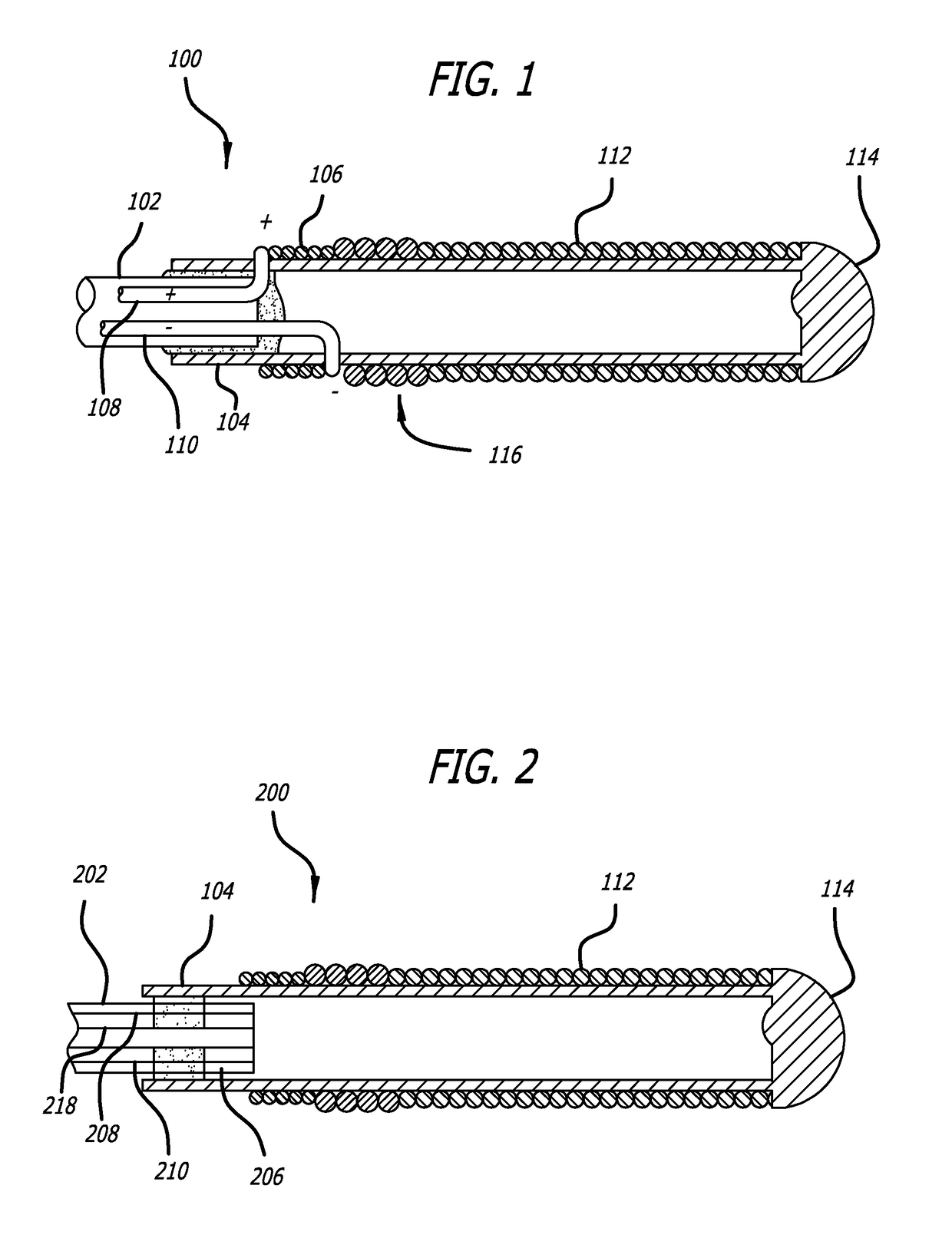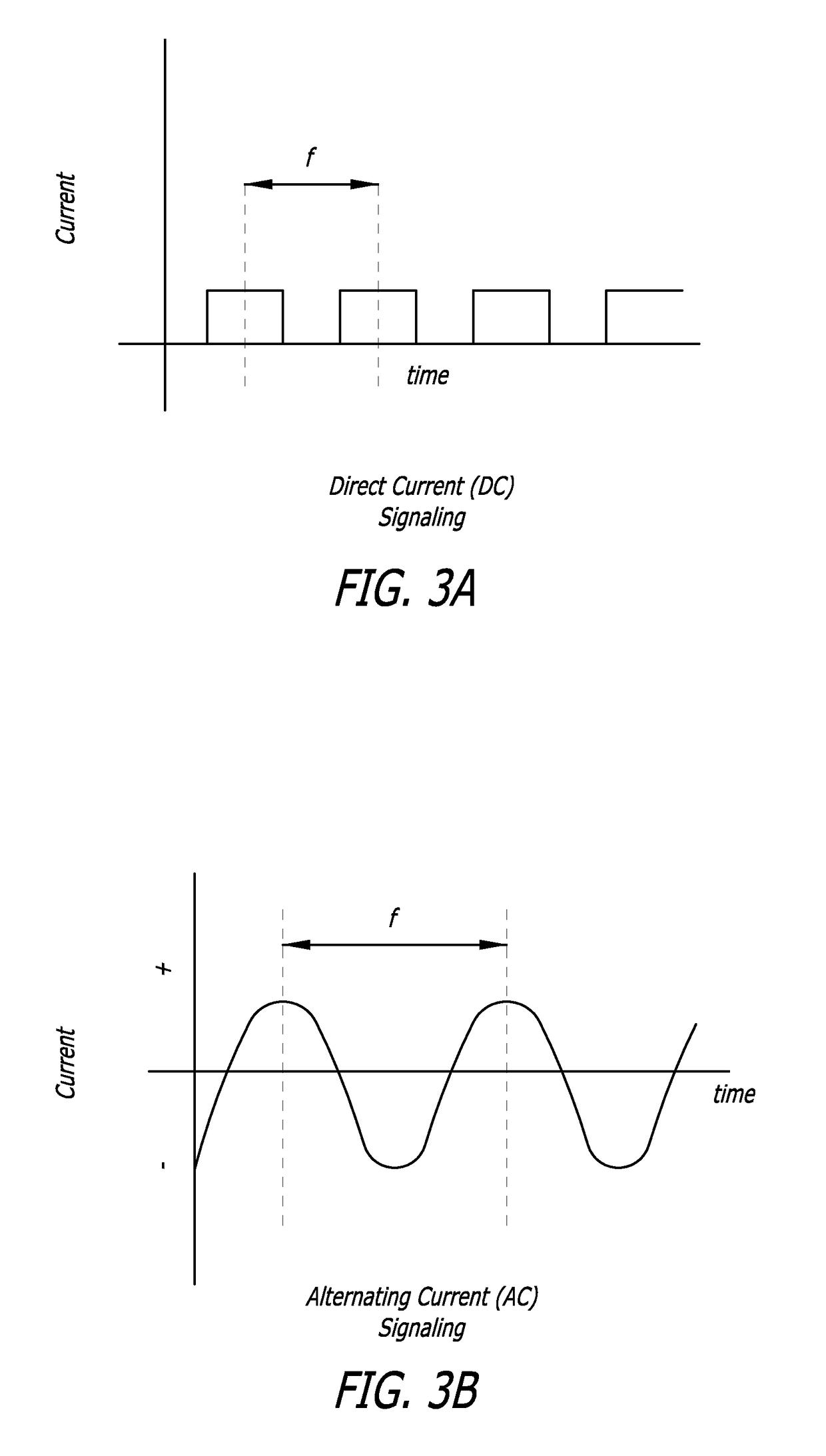Implant delivery system
a technology of implanted and stent, which is applied in the field of implanted delivery systems, can solve the problems of user position, low stability, and low flexibility of micro-coils, and achieve the effect of minimizing the surface temperature of the device and short detachment tim
- Summary
- Abstract
- Description
- Claims
- Application Information
AI Technical Summary
Benefits of technology
Problems solved by technology
Method used
Image
Examples
Embodiment Construction
[0044]Turning to FIG. 1, a detachment system 100 of the present invention, and specifically the distal portion of the detachment system 100, is illustrated. The detachment system 100 includes a pusher 102 that is preferably flexible. The pusher 102 is configured for use in advancing an implant device 112 into and within the body of a patient and, specifically, into a target cavity site for implantation and delivery of the implant device 112. Potential target cavity sites include but are not limited to blood vessels and vascular sites (e.g., aneurysms and fistula), heart openings and defects (e.g., the left atrial appendage), and other luminal organs (e.g., fallopian tubes).
[0045]A stretch-resistant tether 104 detachably couples the implant 112 to the pusher 102. In this example, the tether 104 is a plastic tube that is bonded to the pusher 102. A substantially solid cylinder could also be a design choice for the tether 104. The stretch resistant tether 104 extends at least partially...
PUM
 Login to View More
Login to View More Abstract
Description
Claims
Application Information
 Login to View More
Login to View More - R&D
- Intellectual Property
- Life Sciences
- Materials
- Tech Scout
- Unparalleled Data Quality
- Higher Quality Content
- 60% Fewer Hallucinations
Browse by: Latest US Patents, China's latest patents, Technical Efficacy Thesaurus, Application Domain, Technology Topic, Popular Technical Reports.
© 2025 PatSnap. All rights reserved.Legal|Privacy policy|Modern Slavery Act Transparency Statement|Sitemap|About US| Contact US: help@patsnap.com



